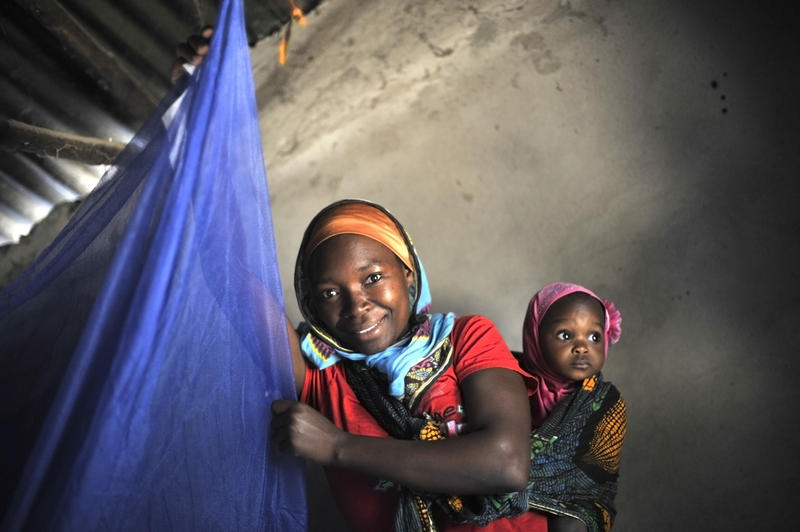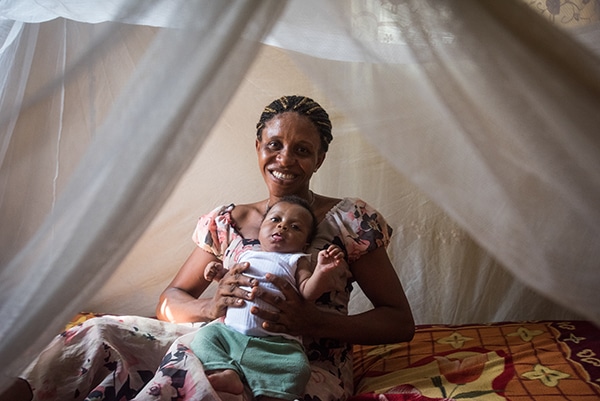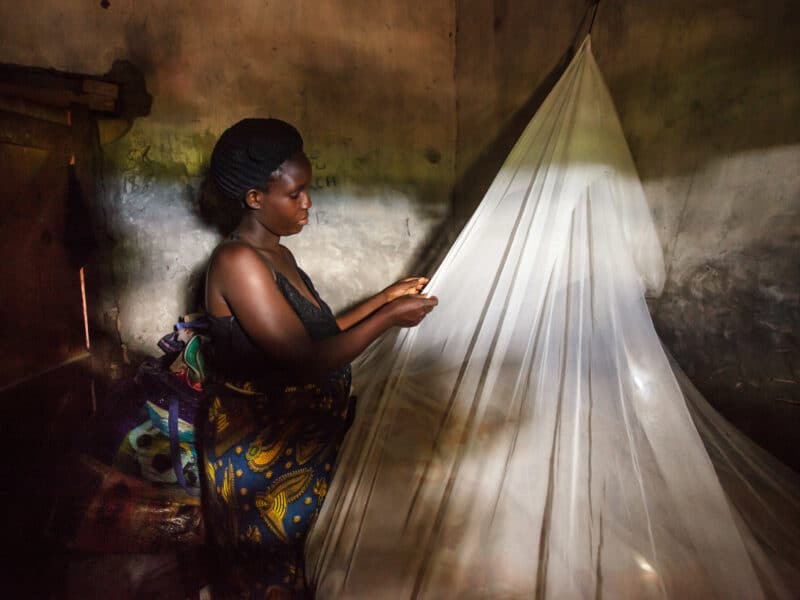A large majority of people living in sub-Saharan Africa who have insecticide-treated bed nets to prevent malaria transmission sleep under them regularly.
But new research from the Johns Hopkins Center for Communication Programs highlights gaps in use that could provide policymakers opportunities to expand the number of people who sleep under their bed nets year-round.
“By and large, when people have a bed net to sleep under, 80 percent of are using them. Our biggest challenge in boosting bed net use is getting enough nets to the people who need them,” says researcher Hannah Koenker, PhD, MPH, director of VectorWorks, a CCP-led bed net distribution program funded by the President’s Malaria Initiative (PMI). “But this research suggests there may be ways to target some of our messages more effectively.”
Koenker will present a poster on the research today at the 2017 American Society of Tropical Medicine and Hygiene Annual Meeting in Baltimore. She and her colleagues found that even when bed net use rates are high, there may be variations between poorer and more affluent communities and between rainy and dry seasons. The survey found that bed net use can increase by as much as 50 percent in the rainy season, when mosquitoes are biting more, as compared to the dry season in countries with distinct seasons.
Treated bed nets, which fit over the bed to keep mosquitoes away from people while they sleep, are the most effective weapon against malaria and bed net distribution campaigns are a staple of development aid across the continent.
The findings, Koenker says, point to the need for more bed nets so that everyone who would benefit from one has access. “The behaviors are in place: People want to sleep under treated bed nets because they know they offer protection from malaria – and because they keep annoying mosquitoes away,” she says.
Some people dislike sleeping under bed nets because they say it gets too hot or they say that there aren’t that many mosquitoes around and the risk is low, which could be why rural people in the dry season and city dwellers don’t use them as frequently as they should.
The research was conducted by using country data from Malaria Indicator Surveys and Demographic and Health Surveys. Analysis included assessing bed net use by month as well as rainfall amounts and demographic data.
In Ghana, Nigeria and Uganda, the researchers found a significant divide related to bed net use between the poorest and the richest residents. More affluent people living in urban areas were significantly less likely to use bed nets they had available than poorer rural residents. While the study didn’t address the reasons why, Koenker says there may be a feeling in the cities that if a case of malaria occurs, the patient is close to a pharmacy and a doctor and could be more easily treated so they worry about it less. At the same time, transmission in cities is lower because more people live in better housing that offer more protection from mosquitoes with window screens and electricity for fans. Still, experts say it’s better to avoid malaria if possible.
In Ghana, the researchers found, the poorest residents use the bed nets they have 80 percent of the time, while 30 to 40 percent of the wealthiest individuals use the bed nets they have.
As for rainy and dry seasons, in Burkina Faso, for example, bed net use during the rainy season when there is higher malaria transmission is 90 percent among those who have bed nets. In May, when it has been dry for months, the number drops to 45 percent.
“It’s rational behavior on their part to not use bed nets when they don’t see as many mosquitoes, but just because you don’t see a lot of mosquitoes doesn’t mean the risk of malaria is zero,” Koenker says.
She says that governments and other decision makers can use data like this to get a clearer idea of bed net use trends. For example, seeing that urban, wealthier residents aren’t using their bed nets as often, behavior change campaigns could focus on the fact that it’s better to prevent malaria altogether than to have to seek treatment. Or, in spots with seasonal variation, messages could remind people that malaria can be transmitted any time of year, not just during the rainy season.
“Ideally, everyone would have a bed net and everyone would sleep under it nightly,” Koenker says.





